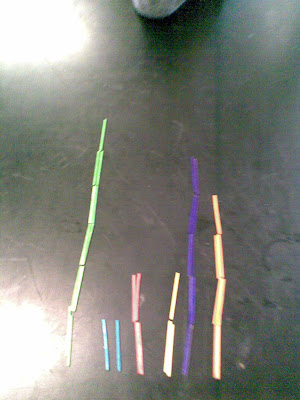Monday, February 8, 2010
Vectors
The above is worth looking at, the second half is an old music video
Vector Addition - Funny video clips are a click away
Vector Addition - Funny video clips are a click away
Saturday, August 22, 2009
Evolution Revision Questions and Answers
Questions
Revision Evolution MC Question 1
Revision Evolution MC Question 2
Revision Evolution MC Question 3/4
Revision Evolution MC Question 5
Revision Evolution MC Question 6
Evolution Revision MC Question 7
Revision Evolution MC Question 8
Answers
Revision Evolution MC Answer 1
Revision Evolution MC Answer 2
Revision Evolution MC Answer 3/4
Revision Evolution MC Answer 5
Revision Evolution MC Answer 6
Revision Evolution MC Answer 8
Revision Evolution MC Question 9
Revision Evolution MC Question 1
Revision Evolution MC Question 2
Revision Evolution MC Question 3/4
Revision Evolution MC Question 5
Revision Evolution MC Question 6
Evolution Revision MC Question 7
Revision Evolution MC Question 8
Answers
Revision Evolution MC Answer 1
Revision Evolution MC Answer 2
Revision Evolution MC Answer 3/4
Revision Evolution MC Answer 5
Revision Evolution MC Answer 6
Revision Evolution MC Answer 8
Revision Evolution MC Question 9
Thursday, August 13, 2009
Monday, August 3, 2009
Friday, July 31, 2009
History of Magnetism
History of magnetism
800 BC - Greek peasants began using iron nails in their shoes, a shepherds shoe got stuck on a naturally occurring magnet, ancients believed that all magnets were attracted to this shepherds mountain in the province of Magnesia.
For over a thousand years Greeks made money by selling load stones
1585AD - Dr Gilbert (Queen Elizabeth I doctor) researched Amber (fossilised tree sap)(electrons) and the famous Dr Gilberts Balls were made out of magnets and he presented them to Queen Elizabeth I. He proved the earth was a giant magnet
Around 1785 - They found currents in wires made magnetic fields are wires with currents jumped in magnetic fields
800 BC - Greek peasants began using iron nails in their shoes, a shepherds shoe got stuck on a naturally occurring magnet, ancients believed that all magnets were attracted to this shepherds mountain in the province of Magnesia.
For over a thousand years Greeks made money by selling load stones
1585AD - Dr Gilbert (Queen Elizabeth I doctor) researched Amber (fossilised tree sap)(electrons) and the famous Dr Gilberts Balls were made out of magnets and he presented them to Queen Elizabeth I. He proved the earth was a giant magnet
Around 1785 - They found currents in wires made magnetic fields are wires with currents jumped in magnetic fields
Lesson on Resistance and Power
Question 1 (Worked Example) Define Power and how it is calculated.
Power is the rate that Energy (joules) is converted form one form (electrical) to another (heat).
It is calculated from 4.8 J for each ml of water increased by 1 degree, or VxI. It has units of watts.
Question 2 What is the formula for Energy. What units are used to buy Energy.
Question 3 (Worked Example) Zany has a 1kW pool pump that operates from 8am to 10 am every day of the year. Electricity cost $ 0.25 per kWhr. What is the annual use of energy? How much does this cost Zany?
P = E/t
E = P x t
E = 1kW x 2hr x 365
E = 730 kWhr
Cost = E x rate per kWhr
Cost = 730 x 0.25 = $182.50
Question 4 Tom has as 4 bar fridges that use 200 W. How many joules of energy does he use in a year? Why is kWhr the normal unit seen on his bill?
Question 5 (Worked Example)
Anne can use 6 V on a 10 ohm light, or 12 volt on a 40 ohm light. Which produces most power? If the leads are 1 ohm, which is the brighter light?

Thus they have the same brightness. Power loss can be calculated by working out the total resistance, the current and voltage drop and then the Power loss.
Wednesday, July 29, 2009
Tuesday, July 14, 2009
Monday, July 13, 2009
Evolution Experiment

A start population 120 coloured tooth picks. Consisting of 6 colours of 20 sticks each.
The 120 were dispersed over a 15 x15 m area.
Two student preditors collected 10 sticks each.
From the kills the field population was calculated.
The field number divided by 5, was the number off spring that were generated and added and distributed to the field population.
In the sequence
Species - Sticks
Trait - Colour
Variation - Yellow, Orange, Red, Blue, Green,Purple
Selection - Not being Predated
Reproduction
Evolution.
We had predation out strip replacement due to over efficient predation.
The photo shows the final population after 7 seasons, havested from the field.
Subscribe to:
Posts (Atom)
Calander
Blog Archive
Translator
About Me

- drhill
- I come from a Science family: My father Geoffrey Hill was Australia's first computer programmer on CSIRAC the fourth computer in the world. He is credited with invention of Computer music and the development of “Interprogram” a language before Basic. My PhD is in Atomic and Molecular Physics. I have researched the activated oxygen layer above the ozone layer, and 'Assigned' the world's smallest molecule. At the University of Toronto I researched high power UV lasers. I have specialized in automation in fibre optics. This developed into research in Machine Intellect and Robots. I have enjoyed work as an Explainer with Questacon and my time as a part-time soldier. I currently teach High School Science at Epping Boys’ High.



